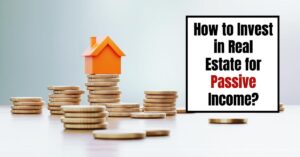The allure of real estate investment is undeniable. It's a tangible asset with the potential for appreciation, passive income, and long-term financial security. But the road to property ownership is often paved with the daunting reality of high prices, especially for aspiring investors with limited capital.
Fear not, intrepid investor! This comprehensive guide dives deep into the world of cheap investment properties, equipping you with the knowledge, strategies, and resources to unearth hidden gems and unlock the door to profitable real estate ventures.
The Ultimate Guide to Finding Cheap Investment Properties
Understanding “Cheap”: Setting Realistic Expectations
Before embarking on this exciting journey, let's define “cheap” in the context of investment properties. It's crucial to align your expectations with market realities.
- “Cheap” is relative: What's considered affordable in Detroit might be exorbitant in San Francisco. Your definition of “cheap” should be anchored to your target market's median property values.
- Cheap doesn't mean dilapidated: While properties requiring renovations can offer significant discounts, avoid equating “cheap” with uninhabitable. A structurally unsound building can quickly become a money pit, negating any initial cost savings.
- Factor in all costs: The purchase price is just the tip of the iceberg. Consider closing costs, potential renovations, carrying costs like property taxes, insurance, and potential vacancies.
1. Laying the Foundation: Pre-Investment Essentials
A successful real estate investment journey begins with a solid foundation. Before diving into property hunting, prioritize these crucial steps:
1.1. Define Your Investment Goals and Strategy
- What's your investment objective? Are you seeking passive income through long-term rentals, quick profits via flipping, or a blend of both?
- How much risk are you comfortable with? Flipping carries higher risk but potentially greater rewards, while long-term rentals offer stability but slower returns.
- What's your investment timeline? This impacts your property selection and exit strategy.
1.2. Secure Your Finances
- Determine your budget: Knowing your financial limitations is crucial. Factor in down payment, closing costs, renovation expenses, and a reserve fund for unexpected repairs.
- Explore financing options: Research mortgages, hard money loans, and private lending options. Shop around for competitive interest rates and loan terms.
- Get pre-approved for a mortgage: This strengthens your position as a serious buyer and streamlines the purchase process.
1.3. Assemble Your Real Estate Dream Team
- Real Estate Agent (Buyer's Agent): A skilled agent specializing in investment properties can be your secret weapon. They'll provide market insights, negotiate on your behalf, and navigate the complexities of real estate transactions.
- Real Estate Attorney: A legal expert ensures your interests are protected throughout the buying process.
- Home Inspector: A thorough inspection is non-negotiable, even for seemingly perfect properties. This helps uncover hidden issues and avoid costly surprises.
- Contractor (If Applicable): If planning renovations, a reliable contractor provides accurate cost estimates and quality workmanship.
2. Hunting Grounds: Where to Find Cheap Investment Properties
Armed with a clear plan and a reliable team, it's time to embark on the treasure hunt for your ideal investment property. Here are some prime hunting grounds:
2.1. Up-and-Coming Neighborhoods
- Identify growth indicators: Look for areas experiencing revitalization, infrastructure improvements, new businesses, and increasing property values.
- Early bird advantage: Getting in early allows you to secure properties at lower prices before the neighborhood's full potential is realized.
- Gentrification considerations: Be mindful of the ethical implications of gentrification and strive for responsible investment practices that benefit both existing and new residents.
Check Our Inventory of Turnkey Rental Properties For Sale
2.2. Foreclosures and Short Sales
- Distressed properties often come at a discount: Foreclosures and short sales present opportunities to acquire properties below market value.
- Navigating the complexities: This arena requires expertise and caution. Working with an experienced real estate agent specializing in distressed properties is crucial.
- Due diligence is paramount: Thorough inspections and title searches are essential to uncover potential liens or hidden issues.
2.3. Off-Market Properties
- Hidden gems beyond the MLS: Off-market properties aren't publicly listed, offering less competition and potential for better deals.
- Networking is key: Connect with wholesalers, contractors, real estate agents, and other investors who often have access to off-market listings.
- Direct mail campaigns: Target specific neighborhoods with compelling offers to entice potential sellers directly.
2.4. Online Platforms and Resources
- Real Estate Marketplaces: Websites like Zillow, Redfin, Realtor.com, and Auction.com offer extensive property listings, including foreclosures and distressed properties.
- Government Programs: Explore HUD homes, Fannie Mae HomePath properties, and local government programs for affordable housing options.
- Online Auctions: Websites like Auction.com and RealtyBid.com host online real estate auctions, providing opportunities for bargain hunters.
3. Sharpening Your Analytical Eye: Evaluating Investment Potential
Finding a “cheap” property is just the first step. The real art lies in identifying properties with the potential to generate returns.
3.1. Conducting Thorough Market Research
- Analyze comparable properties: Research recent sales data of similar properties in the area to gauge fair market value.
- Assess rental demand: Research average rental rates, vacancy rates, and tenant demographics to determine potential rental income.
- Factor in market trends: Consider economic indicators, population growth, and job market conditions that might impact future property values.
3.2. The Power of Numbers: Calculating Profitability
- Cash flow analysis: Determine the property's monthly cash flow by subtracting operating expenses (mortgage payments, taxes, insurance, property management) from potential rental income.
- Cap rate calculation: Calculate the capitalization rate by dividing the property's net operating income by its market value. This metric helps compare the potential return on different properties.
- Cash-on-cash return: This calculation measures the annual cash flow relative to your initial cash investment, providing a clear picture of your return on investment.
3.3. Beyond the Spreadsheet: Qualitative Factors
- Property condition and potential: Assess the property's structural integrity, necessary renovations, and potential for value-add improvements.
- Neighborhood appeal and amenities: Consider factors like school districts, crime rates, proximity to amenities, and overall quality of life that attract tenants.
- Long-term potential: Evaluate the property's potential for appreciation based on market trends, neighborhood growth, and future development plans.
4. Sealing the Deal: Strategies for Acquiring Cheap Properties
Successfully acquiring cheap investment properties requires a strategic approach and a touch of negotiation prowess.
4.1. Crafting a Compelling Offer
- Market knowledge is power: Back up your offer with data on comparable properties and market conditions to justify your price point.
- Highlight your strengths: Showcase your ability to close quickly, provide proof of funds, and minimize contingencies to make your offer more attractive.
- Be prepared to walk away: Avoid emotional attachments and be willing to walk away if the deal doesn't meet your investment criteria.
4.2. The Art of Negotiation
- Understand the seller's motivation: Identify the seller's reasons for selling and tailor your negotiation strategy accordingly.
- Be respectful yet firm: Maintain a professional demeanor while advocating for your best interests.
- Don't be afraid to counteroffer: Negotiation is a back-and-forth process. Be prepared to counteroffer until you reach a mutually beneficial agreement.
4.3. Due Diligence: Your Shield Against Costly Mistakes
- Thorough property inspection: Never skip the inspection. A qualified inspector identifies potential problems and helps you negotiate repairs or price adjustments.
- Title search and insurance: Ensure clear ownership and uncover any liens or encumbrances that could jeopardize your investment.
- Review all documents carefully: Don't hesitate to ask questions and seek legal advice before signing any binding agreements.
5. Unlocking Hidden Value: Strategies for Maximizing Returns
Acquiring a cheap property is just the beginning. The real magic lies in implementing strategies to increase its value and maximize your returns.
5.1. Strategic Renovations for Profit
- Focus on high-ROI improvements: Prioritize renovations that significantly enhance property value and appeal to tenants, such as kitchen and bathroom upgrades, flooring, and curb appeal enhancements.
- Cost-effective solutions: Explore budget-friendly materials and DIY options where feasible without compromising quality.
- Balance aesthetics with functionality: Choose durable materials and timeless designs that appeal to a wide range of tenants.
5.2. Attracting High-Quality Tenants
- Comprehensive tenant screening: Implement a thorough screening process to attract responsible tenants with good credit history and rental history.
- Market your property effectively: Use high-quality photos, compelling descriptions, and online platforms to showcase your property's best features.
- Offer competitive rental rates: Research comparable rental properties to set fair yet competitive rental rates that attract and retain quality tenants.
5.3. Managing Your Investment for Long-Term Success
- Proactive property management: Regular maintenance, prompt communication with tenants, and efficient rent collection are crucial for a smooth rental experience.
- Consider professional property management: If time or distance is a constraint, hiring a property manager can alleviate stress and optimize your investment.
- Reinvest profits wisely: Use rental income and appreciation gains to further improve your property, expand your portfolio, or diversify your investments.
Summary:
Finding cheap investment properties requires diligence, strategy, and a touch of entrepreneurial spirit. By following this comprehensive guide, you'll be well-equipped to navigate the exciting world of real estate, unlock hidden gems, and pave your path to financial freedom.
Remember, the journey may have its challenges, but the rewards of building wealth through real estate are well worth the effort. So, embrace the adventure, equip yourself with knowledge, and watch your investment portfolio flourish!
Frequently Asked Questions:
What is considered a “cheap” investment property?
“Cheap” is relative and depends on the local market. Focus on properties priced below the median value in your target area.
Do I need to buy a property that needs renovations?
While renovations can offer discounts, avoid properties in such poor condition they become money pits. Prioritize properties with solid structures and manageable improvements.
How do I determine if a property is a good investment?
Calculate the property's cash flow, cap rate, and cash-on-cash return to assess profitability. Also, consider neighborhood appeal, long-term potential, and the property's condition.
What are some reliable resources for finding cheap properties?
Utilize online marketplaces like Zillow and Realtor.com, explore government programs, and network with real estate professionals for off-market opportunities.
How can I ensure I get a good deal on a property?
Craft a compelling offer backed by market data, be prepared to negotiate, and conduct thorough due diligence before signing any agreements.
What are some strategies for maximizing returns on my investment?
Prioritize high-ROI renovations, attract high-quality tenants, and manage your property efficiently for long-term success.
Is professional property management necessary?
Consider professional management if time constraints or distance are factors. They can alleviate stress and optimize your investment.
What are the risks associated with investing in real estate?
Potential risks include fluctuating market values, unexpected repairs, and tenant issues. However, proper research and due diligence can mitigate these risks.
Turnkey Real Estate Investment With Norada
Searching for investment properties can be tough—but Norada makes it easy by offering fully vetted, high-return opportunities nationwide.
Find properties priced right to maximize your cash flow and build long-term wealth without the hassle of hunting for deals yourself.
HOT NEW LISTINGS JUST ADDED!
Talk to an investment counselor today (No Obligation):
(800) 611-3060
Read More:
- Turnkey Rental Properties For Sale
- Best Places to Buy a House in the USA for Investment
- What Types of Loans Can You Get for an Investment Property?
- Investment Properties in Prime Locations: Maximize Your Returns
- 4 Real Estate Investment Strategies For New Investors
- How to Choose the Best Market for Your Real Estate Investment
- Is Income Property Investment a Smart Investment?
- Is 2024 a Good Time to Buy an Investment Property?
- 10 Reasons Why Real Estate is a Prudent Investment in 2025
- 10 Best Beach Towns for Short-Term Rental Investment











